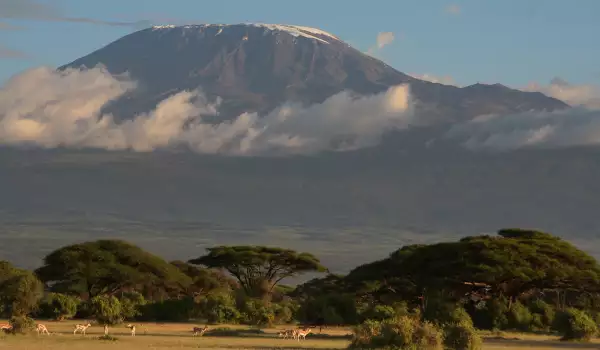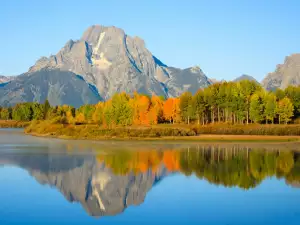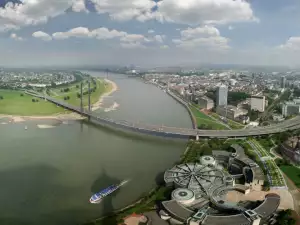Mount Kilimandjaro

Kilimandjaro is the highest mountain in Africa, reaching 5895 m. The three conical tips standing majestically on the 80-mile length of this massive mountain range. The distance from there to the capital, Nairobi, is approximately 225 km away, and Grand Valley is about 160 km away.
This peak is one of the greatest challenges to mountaineers. If you plan to try and conquer it is best to do so in the period from December to January because from April to November rainfall is heavy.

The highest point of this mountain is the volcanic peak Uhuru, or better known as Kibo.
The mountain is formed by three extinct volcanic merged craters - Kibo (5, 895 m) Mavenzi (5, 356 m) and Schirra (4006 m). Snow on the mountain border is located between 5300 m and 5700 m along the ridge of the mountain are glaciers which, cover an area over 11 square kilometers.
Kilimandjaro’s average amount of annual rainfall is about 1000 mm. Vegetation varies depending on altitude levels. In the lowest parts the equatorial forests grow. Then the forests are characteristic of humid tropics. Once there were the plant species typical of savanna. In the highest parts of the mountains there are extensive meadows.
For the first time when Kilimandjaro, the highest mountain in Africa, was unknown to the world, it was mentioned by ancient Greek geographer, Ptolemy in 1848. However, German missionary Johann Rebman hears of the silver top of the mountain and on returning to his homeland shares what he heard from the locals and awakens the interest of Europeans to the unknown land and in the following years several expeditions visited this part of Africa.
Today Kilimandjaro is the challenging attraction that attracts thousands of tourists each year. The very top of the steep climb takes about 5 - 8 days, but when you get to the top and before your eyes is a vast panorama of the whole of Kenya and Tanzania, you will understand that effort was worth it.















